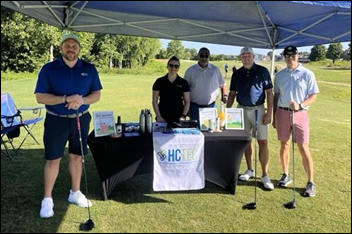Curbside Consult with Dr. Jayne 6/17/24
We are deep into the summer doldrums portion of the healthcare IT hype cycle. Companies that have big news to share are saving it up for the fall conferences. Some are making announcements that seem to be recycling old content and hoping no one notices.
I’ve worked with a number of provider organizations and it always seemed like summer was slow there as well. With employees taking vacations, the appetite for major go-lives or launches of new initiatives was typically low. I’m working on roughly a dozen smaller projects right now, which sounds like it could be chaotic but actually is going well.
Earlier this week, I worked on a project to help an organization get ahead of the game on their influenza vaccine campaigns. Review of their most recent data on flu-related hospitalizations revealed an upward trend, so they’re planning to mobilize in the community well in advance of vaccine availability. They are in the prep stages, but it is exciting to work with someone who is thinking ahead versus the usual last-minute crunches that come my way. I’ve drafted all their clinical messaging and created timelines for the different phases of the campaign, now it’s off to their various committees for any requested modifications and approval.
I also spent the better part of a day writing demo scripts for a solution vendor that has limited physician support. They are relatively new to the market and don’t have any physicians on staff other than an extremely fractional chief medical officer. Before connecting with me, they were letting their sales reps construct their own demo scripts. Based on some of the scenarios I was presented with, I suspect that AI may have had a hand in their creation. They were technically correct, but the scripts were stilted and didn’t flow they way they needed to in order to resonate with a clinical decision maker.
People ask what makes a good demo. I have a short list of things that I think about as I create scripts. First, you have to understand the audience. Is this a high-level demo to put on a website or to make generally available? Or is it for a specific group of clinical decision makers?
If it’s for clinicians, we need to understand the practice setting (inpatient, ambulatory, or something else) and the clinical roles that are involved, as well as the spectrum of patient demographics. Although you can make decent high-level demos that have broad appeal, when you are showing your product in front of potential end users, the devil can be in the details. Content for a community health clinic demo that will resonate with the audience may look quite different than that for a private practice in an affluent area.
When you get into the details of a clinical demo, it’s important to make sure that the scenarios are typical and appropriate. For example, going in front of frazzled family physicians with a demo that only includes patients with sinus infections and urinary tract infections is superficial at best and may make them think that you don’t understand what they do all day. However, rolling in with scenarios where patients have three or four chronic conditions and suboptimal insurance coverage will be a bit more impressive.
It’s also important that the team that presents it uses the right vernacular for the audience, and especially that they pronounce medical words correctly. Know where abbreviations are typical and how to say them. For example, talking about a coronary artery bypass graft (CABG) as a “cabbage” is OK. Calling it a “see-aye-bee-gee” is less than ideal.
Using obscure Latin names for anatomical structures is a no-no, especially if clinicians are used to using lay terminology for those parts. “Second toe” is just as good as “digitus secondus,” when you’re talking to a family medicine physician. You don’t want me thinking “what is he talking about?” when I’m supposed to be focusing on your product.
The scripts went back to the vendor for review and we will meet later this week to discuss them. I’ll be crossing the phalanges of my second and third upper extremity digits that they accept the recommendations largely as recommended.
I spent a big chunk of hours working on continuing medical education requirements that need to be complete before I can renew my DEA number in the fall. As a telehealth physician, given my state’s laws and my clinical employer’s rules, I don’t prescribe controlled substances. However, that employer requires me to keep a current DEA number as a proxy for proving that I haven’t violated any rules with the DEA. As of last summer, federal legislation requires everyone who is renewing their DEA registrations to attest to completion of eight hours of education on the prevention and treatment of opioid use disorder and other substance use disorders.
I had initially started an educational module from a well-known continuing education provider. However, it was light on the educational content and heavy on questions that aren’t germane to the practice of many physicians. For example, the first module was all about orthopedic patients presenting to the emergency department who might require pain management. There were several “which of the following is the BEST option to treat this patient” type questions. Those are always infuriating because there may be several options that are technically correct but the authors are hoping you read the one specific study that says a specific option is best. Not to mention, the reality of “best” often revolves around the patient’s insurance coverage, whether they can get someone to take a prescription to the pharmacy for them, and other factors that are independent of an isolated clinical scenario. That module wouldn’t have been useful at all for a gynecological surgeon, who has a need to prescribe controlled substances but who probably last saw an orthopedic patient in the emergency department during their residency training.
I powered through to at least get an hour’s worth of credit, but then spent a bit of time trying to find a continuing education provider whose content better matched my own needs. Surprisingly, the American Medical Association was the winner with a 50+ hour curriculum from which I could choose my remaining seven hours in a way that meets my needs.
None of this addresses the fact that my clinical employer is making their physicians cumulatively spend tens of thousands of dollars each year to demonstrate that they’re not bad guys because they hold a valid DEA number. It’s just another hoop that each of us has to just jump through, unfortunately.
I also spent some time working on a residency lecture that I’ll be giving later in the summer, and that was actually fun. I always look for good visuals and a friend sent me a recent presentation from a gastroenterologist as an example. All of the graphics were GIFs that tied back to the show “Schitt’s Creek,” which was great given stool-focused theme of the lecture.
All in all, it’s another week in the life of a clinical informaticist. It can occasionally be dull, but usually isn’t that way for long.
What part of the year is the slowest for your team or organization? Leave a comment or email me.

Email Dr. Jayne.












































I've figured it out. At first I was confused but now all is clear. You see, we ARE running the…